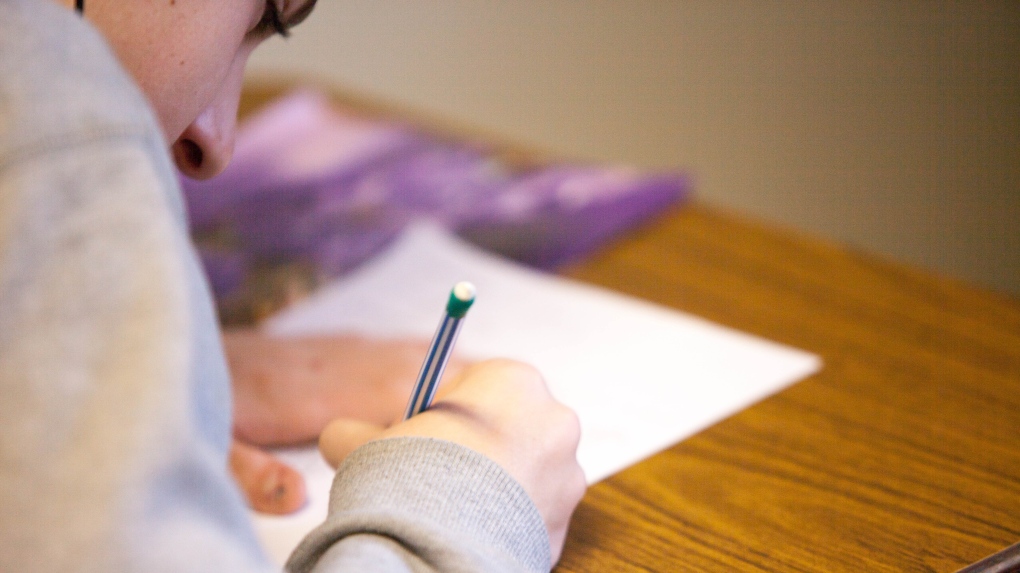'Ungrading': How one Ontario teacher is changing her approach to report cards
 Photo by Ben Mullins on Unsplash
Photo by Ben Mullins on Unsplash
An Ontario high school teacher plans to continue with an alternative method of grading her students in the new school year after an experiment last semester.
Stacie Oliver teaches at A.B. Lucas Secondary School in London, Ont. and recently began a new method of determining her students’ midterm and final grades.
Speaking on Newstalk 580 CFRA’s Ottawa Now with Kristy Cameron, Oliver said she and her students work together on grades twice a year, at midterms and at the end of the semester.
“The students propose their own grade at those two points and then they have to justify and prove to me that they have earned that grade,” Oliver explained.
“We have digital portfolios that they create throughout the semester that showcases not only their best work, but also all of the attempts they made along the way to get to that ‘showcase piece’, which is what they deem to be the best representation of their learning.”
Oliver says students must prove their work meets the expectations in the provincial curriculum.
“They understand the curriculum document very well and can speak to how their work meets and/or much of the time exceeds those expectations,” she said.
Known as “ungrading,” Oliver said the method is about changing the understanding of how to measure success in learning.
“There is lots of evidence that suggests that grades are very subjective,” she said. “It’s difficult to be able to objectively say, ‘This number is the number that truly captures the learning.’ What that might be in my classroom -- is that the same across another department, another subject area, another school?”
But the bigger aspect, Oliver says, is how students tie self-worth and identity to their grade number.
“What ends up happening is they don’t feel that everything is futile because they can continue to do it—whether it’s a task or practice a skill—they can continue to practice it until they’re satisfied that they’ve met that. I think that that’s really important and it does fuel students because they then want to learn and they want to get better,” she said.
Oliver said students in every classroom have differing attitudes on grades. She says the ungrading experiment allows students across that spectrum to take ownership of their learning.
“What ends up happening is they don’t feel that everything is futile because they can continue to do it—whether it’s a task or practice a skill—they can continue to practice it until they’re satisfied that they’ve met that. I think that that’s really important and it does fuel students because they then want to learn and they want to get better,” she said.
Oliver said she retains the authority, as teacher, to tell a student they haven’t justified the grade they may be arguing for, but says most students’ evaluations of their work are pretty close to her own.
“If I did have to change a grade, which was not a lot of the time, I was raising grades. I’ve had students tell me they don’t want to seem arrogant or think too highly of themselves, so they give themselves a lower grade than they might otherwise have done,” she said.
Oliver says her principal and school board approve of the grading scheme, and she plans to continue it in the fall.
“My principal has a strong interest in this thing we’re calling ‘ungrading’ and so he’s been very supportive right from the very beginning, as has the board, so it’s been great.”
CTVNews.ca Top Stories

Can the Governor General do what Pierre Poilievre is asking? This expert says no
A historically difficult week for Prime Minister Justin Trudeau and his Liberal government ended with a renewed push from Conservative Leader Pierre Poilievre to topple this government – this time in the form a letter to the Governor General.
'I'm still thinking pinch me': lost puppy reunited with family after five years
After almost five years of searching and never giving up hope, the Tuffin family received the best Christmas gift they could have hoped for: being reunited with their long-lost puppy.
Two U.S. Navy pilots shot down over Red Sea in apparent 'friendly fire' incident, U.S. military says
Two U.S. Navy pilots were shot down Sunday over the Red Sea in an apparent 'friendly fire' incident, the U.S military said, marking the most serious incident to threaten troops in over a year of America targeting Yemen's Houthi rebels.
BREAKING NEWS 6 adults, 4 children taken to hospital following suspected carbon monoxide exposure in Vanier
The Ottawa Paramedic Service says ten people were taken to hospital, one of them in life-threatening condition, following an incident of suspected carbon monoxide exposure Sunday morning in the neighbourhood of Vanier.
Big splash: Halifax mermaid waves goodbye after 16 years
Halifax's Raina the Mermaid is closing her business after 16 years in the Maritimes.
Second body recovered from site of B.C. landslide
The second resident of a home that was destroyed by a landslide in Lions Bay, B.C., last weekend was found dead Saturday, officials confirmed.
A small plane crashes into a Brazilian town popular with tourists and the number of dead is unclear
A small plane crashed into a Brazilian town that is popular with tourists on Sunday, killing several people, local officials said.
OPP find wanted man by chance in eastern Ontario home, seize $50K worth of drugs
A wanted eastern Ontario man was found with $50,000 worth of drugs and cash on him in a home in Bancroft, Ont. on Friday morning, according to the Ontario Provincial Police (OPP).
B.C. mayor gets calls from across Canada about 'crazy' plan to recruit doctors
A British Columbia community's "out-of-the-box" plan to ease its family doctor shortage by hiring physicians as city employees is sparking interest from across Canada, says Colwood Mayor Doug Kobayashi.
































